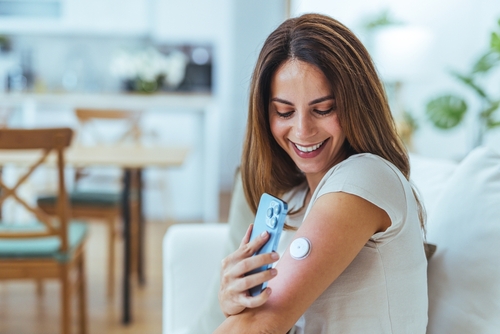Continuous Glucose Monitors (CGMs) have revolutionized the way individuals—especially those with diabetes—track and manage their blood sugar levels. These wearable devices provide real-time data on glucose fluctuations, offering insights that traditional fingerstick tests simply can’t match. Popular CGM brands include Dexcom, FreeStyle Libre, and Medtronic Guardian, each offering varying features such as integration with insulin pumps, predictive alerts, and smartphone compatibility. While CGMs are primarily prescribed for people with Type 1 or Type 2 diabetes, there’s growing interest among non-diabetics and wellness enthusiasts who use them to understand how specific foods and lifestyle choices affect their glucose levels.
The appeal of CGMs lies in their ability to uncover personalized glycemic responses. For example, recent studies show that individuals can have vastly different reactions to the same carbohydrate-rich foods like rice, bread, and pasta. One person might experience a sharp spike after eating rice, while another sees minimal change. I personally saw the biggest spike with sugar cookies! This variability is influenced by factors such as insulin sensitivity, microbiome composition, and even meal timing. Short-term CGM use—just a few weeks—can be incredibly valuable for identifying these patterns. Users can experiment with food combinations, meal timing, and exercise to see what keeps their glucose levels stable, making CGMs a powerful tool for personalized nutrition.
However, CGMs are not without drawbacks. Cost is a major barrier, especially for those without insurance coverage. Some devices require calibration with fingersticks, and users may experience skin irritation or alarm fatigue from frequent alerts. There’s also a learning curve in interpreting the data, which can lead to information overload. Despite these challenges, short-term CGM use can offer meaningful insights for those curious about their metabolic health. By tracking responses to common foods like pasta or bread, users can make informed dietary choices that support long-term wellness—even if they don’t continue using the device indefinitely.
For many of my nondiabetic patients I recommend short term use of CGM’s, just to gain some insight into their response to glucose loads. There is a version by Abbott called Lingo that is over-the-counter and fairly user friendly as it pairs with your phone. Just be aware of the alarms as it might wake you at night with low glucose levels, which if you are not diabetic, are normal. This happened to me several times!
References: Sugarfit CGM Experiment: Fresh vs. Reheated Rice Megan Pfiffner Nutrition: Individual Glycemic Responses to Carbs ADCES: Pros and Cons of CGM

